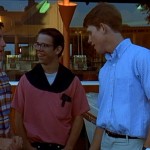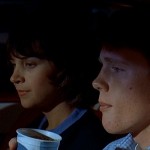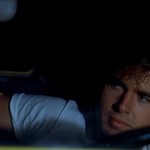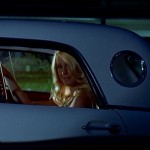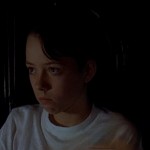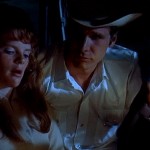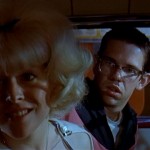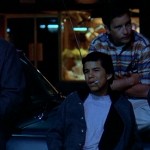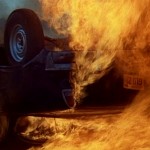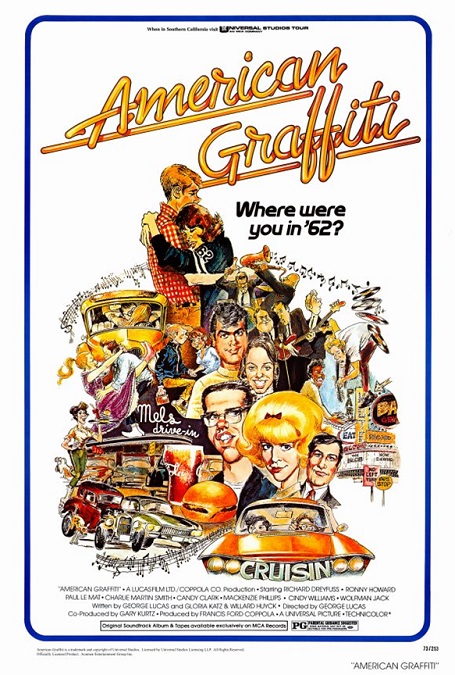
American Graffiti – 1973
Everyone remembers American Graffiti because it was Harrison Ford’s first film, except that it really wasn’t, and because it was one of George Lucas’s early films. But ask the average person who else was in the movie and they wouldn’t be able to tell you. It actually had some actors in it that are pretty famous today. Richard Dreyfuss arguably played the lead, Curt Henderson, alongside Ron Howard, known back then as Ronny Howard, playing the part of Steve Bollander. I say arguably because the movie didn’t really have a central plot, and so there was no real lead… but I’ll get to that in a bit.
The movie also had a pretty good supporting cast, some of whom I remember, some of whom I don’t. Cindy Williams, who most people know from her role of Shirley Feeney on the hit TV show Lavern and Shirley, played Steve’s girlfriend and Curt’s sister, Laurie Henderson. Curt and Steve had two close friends, each of whom seemed to have equal weight in terms of the film’s plot. Paul Le Mat played the greaser, John Milner. Charles Martin Smith played the nerd, Terry “The Toad” Fields. . Harrison Ford, played the part of Bob Falfa, a racer looking to race John.
The Toad meets Debbie, played by Candy Clark, a blonde girl looking for fun. Mackenzie Phillips, daughter of John Phillips from the Mamas and the Papas, played the part of Carol, a young girl who rides with John up and down the strip. Curt spends time trying to find the mysterious blonde woman in the T-Bird who caught his eye, played by Suzanne Summers. This film was clearly all about the cast.
But that was part of the film’s genius. It was a character driven movie. Unfortunately, it was also part of the film’s weakness. There was very little cohesive plot. The movie followed the various adventures of its diverse characters over the course of a single night, never lingering on any one of them for too long. Not only did the different actors have completely separate story lines, they each had multiple story lines that were almost episodic. It was like a series of barely related scenes that helped to paint an overall picture of the era rather than to tell a specific story.
For example, at one point, Curt is seemingly forced to join a greaser gang called the Pharos. He is pressured into a criminal initiation rite which involved him hooking a chain to a police car, causing its back axle to be torn off. It had nothing to do with his decision whether or not to go to college, nothing to do with him searching for the mysterious blonde woman, and nothing to do with him meeting Wolfman Jack. It was just another random adventure that could have happened to any other character in the film.
But I think Curt and Steve could be called the main characters because the film starts off with the two of them discussing their upcoming departure to college. Curt doesn’t know if he will go and Steve is eager to go. However, at the end of the movie, after they each have unique experiences, Curt decides to leave for college while Steve decides not to go.
The film seemed to be one big nostalgia trip taking us back to the 1950s and early 60s, the days of classic cars, cruising, sock hops, greasers, and rock and roll. But I could also call it a coming-of-age film as it showed the subtle transition of four young men, Curt, Steve, John, and Terry, as they grew from teenagers to young adults. They all seemed to learn significant lessons about themselves during that one eventful night, lessons that made them grow a little. And I will say that the characters were all developed well enough that I really got to know them by the end.
Now I’m going to mention one thing about the film, about which I have to throw up a huge red flag! OK, so the film’s climax is a big hot rod race out on Paradise Road between John Milner in his 1932 Ford Deuce Coup, and Bob Falfa in his 55 Chevy. Laurie is riding shotgun with Bob. The race starts and just before they reach the finish line, Falfa blows a front tire and loses control of the car. It flies off the road and crashes, rolling over several times before landing on its roof. Bob and Laurie jump out and run away from the wreck before it explodes into flames. WRONG! WRONG! Bob and Laurie are dead or at the very least, injured, or even shaken up! But no! They both walk away without so much as a bruise. Nope! Not buying that one!
Another important part of the film, maybe the most important part that helped to paint that portrait of the 50s and early 60s is the music. The music actually never stopped. There was always music of the era being played in the background of every scene. Forty-one songs were used, ranging from the Beach Boys to Buddy Holly, from Chuck Berry to The Diamonds, from Flash Cadillac & the Continental Kids to The Platters, and everything in between. The music from that time had a very distinct and easily recognizable style that really helped set the right tone for the movie.
